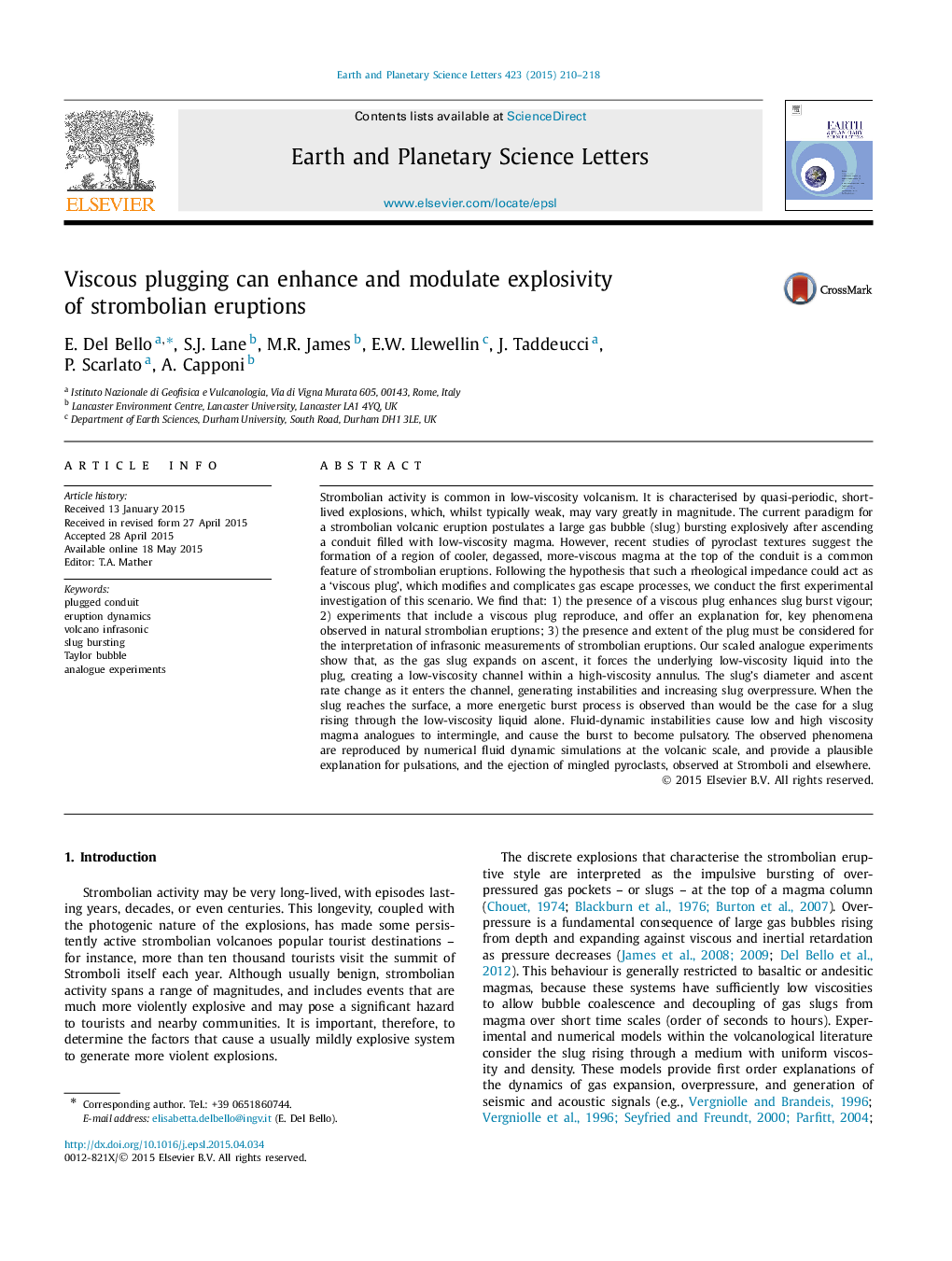| کد مقاله | کد نشریه | سال انتشار | مقاله انگلیسی | نسخه تمام متن |
|---|---|---|---|---|
| 4676982 | 1634733 | 2015 | 9 صفحه PDF | دانلود رایگان |
• We present laboratory experiments in which gas slugs ascend a pipe plugged with a viscous liquid.
• The presence of a viscous plug enhances burst vigour.
• Slug–plug interaction causes pulsatory bursting resembling natural strombolian eruptions.
• Experiments indicate slug passage promotes mingling between vertically stratified magmas.
Strombolian activity is common in low-viscosity volcanism. It is characterised by quasi-periodic, short-lived explosions, which, whilst typically weak, may vary greatly in magnitude. The current paradigm for a strombolian volcanic eruption postulates a large gas bubble (slug) bursting explosively after ascending a conduit filled with low-viscosity magma. However, recent studies of pyroclast textures suggest the formation of a region of cooler, degassed, more-viscous magma at the top of the conduit is a common feature of strombolian eruptions. Following the hypothesis that such a rheological impedance could act as a ‘viscous plug’, which modifies and complicates gas escape processes, we conduct the first experimental investigation of this scenario. We find that: 1) the presence of a viscous plug enhances slug burst vigour; 2) experiments that include a viscous plug reproduce, and offer an explanation for, key phenomena observed in natural strombolian eruptions; 3) the presence and extent of the plug must be considered for the interpretation of infrasonic measurements of strombolian eruptions. Our scaled analogue experiments show that, as the gas slug expands on ascent, it forces the underlying low-viscosity liquid into the plug, creating a low-viscosity channel within a high-viscosity annulus. The slug's diameter and ascent rate change as it enters the channel, generating instabilities and increasing slug overpressure. When the slug reaches the surface, a more energetic burst process is observed than would be the case for a slug rising through the low-viscosity liquid alone. Fluid-dynamic instabilities cause low and high viscosity magma analogues to intermingle, and cause the burst to become pulsatory. The observed phenomena are reproduced by numerical fluid dynamic simulations at the volcanic scale, and provide a plausible explanation for pulsations, and the ejection of mingled pyroclasts, observed at Stromboli and elsewhere.
Journal: Earth and Planetary Science Letters - Volume 423, 1 August 2015, Pages 210–218
